Can Dogs Eat Green Beans
Can dogs eat green beans?” Yes, dogs can eat green beans! These vegetables are safe and nutritious for dogs when served properly. Green beans are low in calories and high in vitamins, minerals, and fiber, making them a healthy treat option. Whether raw, cooked, or frozen, green beans can be a great addition to your dog’s diet, but always introduce them gradually and in moderation to avoid digestive issues.
What Are Green Beans?
Green beans, also known as snap beans or string beans, are a common vegetable found in many kitchens. They are long, slender, and green, typically cooked and consumed in various dishes. Green beans are packed with essential nutrients and are known for their low-calorie content, making them a popular choice for health-conscious individuals and, as it turns out, dogs too!
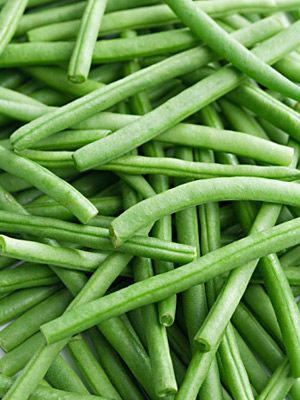
Nutritional Benefits of Green Beans for Dogs:
Vitamins and Minerals:
Green beans are packed with essential vitamins like A, C, and K. Vitamin A supports vision and immune function, Vitamin C acts as an antioxidant, and Vitamin K is crucial for blood clotting. They also contain important minerals such as iron, calcium, and magnesium, which contribute to overall health.
Low-Calorie Snack:
One of the standout benefits of green beans is their low-calorie content, making them an excellent treat option for dogs, especially those needing to manage their weight. Substituting high-calorie treats with green beans can help keep your dog’s calorie intake in check.
High Fiber Content:
Green beans are rich in dietary fiber, which aids in digestion and helps maintain a healthy gut. Fiber is essential for regular bowel movements and can prevent constipation and other digestive issues in dogs.
Hydration:
Green beans have a high water content, which can help keep your dog hydrated, particularly during hot weather or after physical activity.
Antioxidants:
The antioxidants found in green beans can help protect your dog’s cells from damage caused by free radicals, supporting overall health and potentially reducing the risk of chronic diseases.
Supports Weight Loss:
For overweight dogs, green beans can be a great addition to a weight management plan. They help your dog feel full without adding many calories, which can aid in gradual and healthy weight loss.
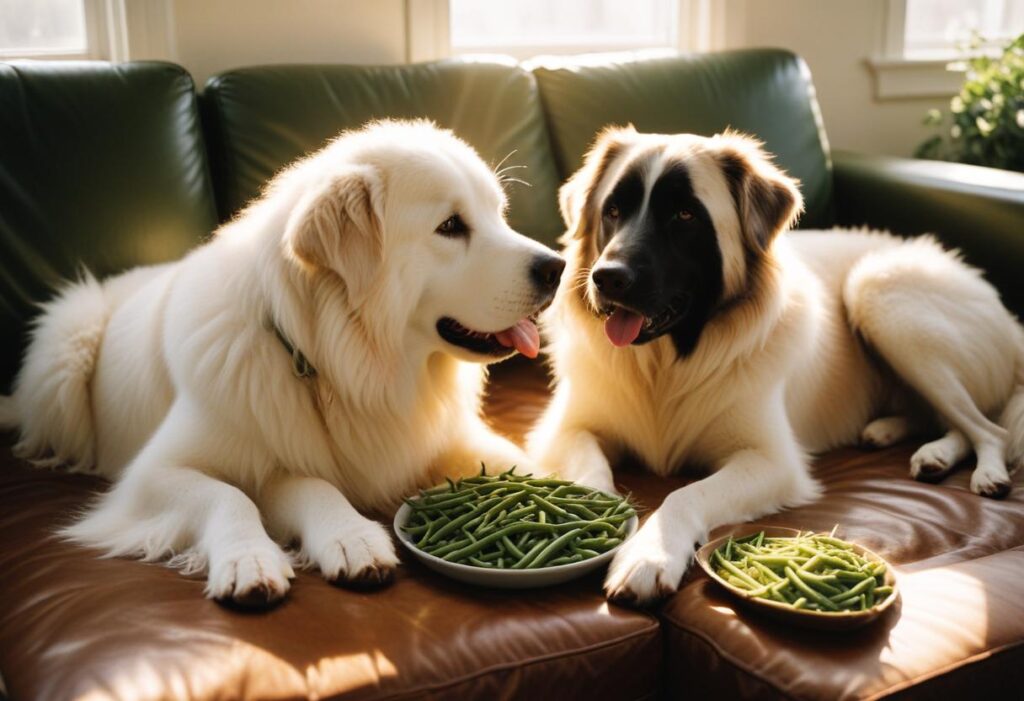
Can All Dogs Eat Green Beans?
Age Considerations
While green beans can be beneficial for dogs of all ages, it’s essential to consider the specific needs of your pet. All dogs from Puppies to senior dogs don’t have the same nutritional requirements. Always consult your veterinarian before introducing new foods into your dog’s diet, especially for puppies and older dogs.
Health Conditions
Dogs with certain health conditions may need to avoid green beans. For example, dogs with kidney issues might need a special diet, and the added fiber from green beans could affect their health. Always discuss with your vet if your dog has any existing health concerns.
Allergies and Sensitivities
Not all but, some dogs are allergic to green beans. It’s essential to monitor your dog for any signs of allergic reactions when introducing green beans into their diet. Symptoms may be itching, swelling, and digestive upset.
How to Introduce Green Beans to Your Dog’s Diet
Raw vs. Cooked Green Beans:
Both raw and cooked green beans can be fed to dogs, but cooked green beans are generally easier to digest. Steaming or boiling green beans without any seasonings is the best way to prepare them. Avoid adding salt, garlic, onions, or any other spices that can be harmful to dogs.
Start Small:
Begin by offering small amounts of green beans to your dog. A few pieces mixed into their regular food can be a good starting point. This allows you to monitor how your dog reacts to this new addition to their diet.
Portion Sizes:
Moderation is key. Green beans should be given as a treat and not as a staple in your dog’s diet. Treats should only make up about 10% of your dog’s daily caloric intake to ensure they receive a balanced diet with all necessary nutrients.
Frequency of Feeding:
Gradually increase the frequency of feeding green beans. Start with a couple of times a week and observe your dog’s digestion and overall health. If they tolerate it well, you can offer green beans more regularly.
Observe Your Dog’s Reaction:
Monitor your dog for any signs of digestive upset, such as diarrhea or vomiting, when introducing green beans. If you notice any adverse reactions, reduce the amount or discontinue feeding them.
Mix with Regular Food:
To make the transition smoother, mix the green beans with your dog’s regular food. This helps them get used to the new taste and texture gradually.
Consult Your Veterinarian:
Always check with your veterinarian before introducing any new food into your dog’s diet, especially if your dog has existing health conditions or dietary restrictions.
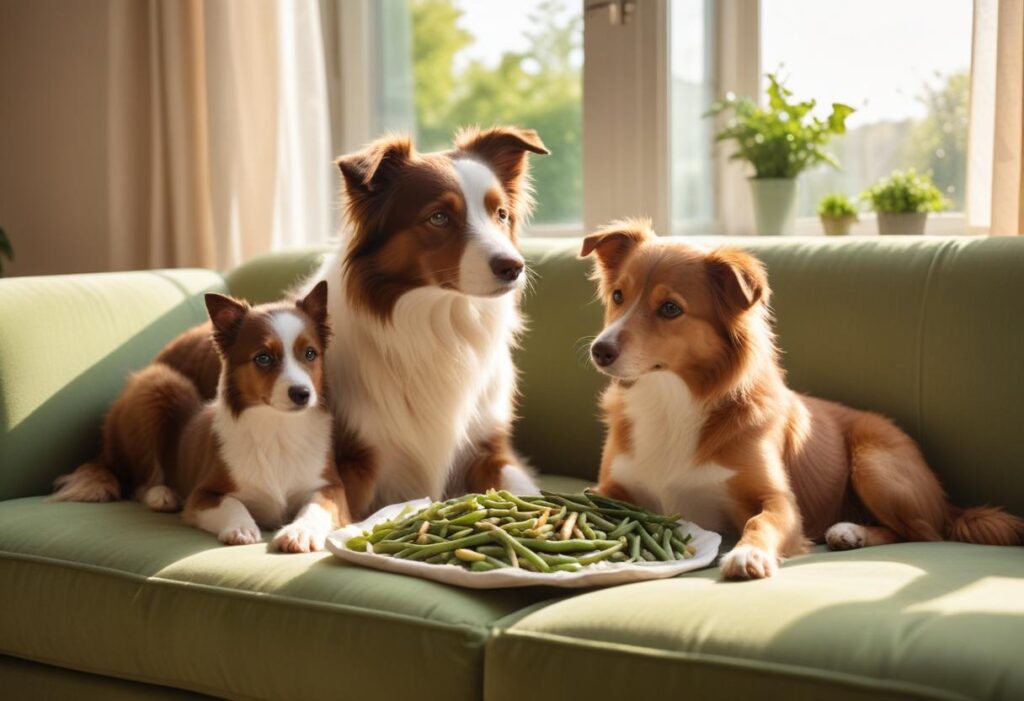
Preparation Methods for Green Beans: Can dogs eat green beans
Steamed Green Beans: Steaming green beans is one of the healthiest ways to prepare them for your dog. Steaming retains most of the nutrients while making the beans softer and easier to digest. Simply wash the green beans thoroughly, trim the ends, and steam them until tender. Avoid adding any seasonings or oils.
Boiled Green Beans: Boiling is another easy method. Boil the green beans in water until they are soft but not mushy. Once cooked, drain the water and let the beans cool before serving them to your dog. Like with steaming, avoid adding any salt or spices.
Frozen Green Beans: Frozen green beans can be a refreshing treat, especially during hot weather. They can also help soothe teething discomfort in puppies. Make sure to cut the frozen green beans into small, manageable pieces to prevent choking.
Canned Green Beans: If you use canned green beans, choose ones that are no-salt-added and free from any preservatives or additives. Rinse the beans thoroughly under running water to remove any excess sodium before serving them to your dog.
Pureed Green Beans: For dogs with dental issues or those who prefer a smoother texture, pureeing green beans can be a great option. Simply cook the green beans and blend them until they reach a smooth consistency. You can mix the puree with your dog’s regular food or serve it as a standalone treat.
Dehydrated Green Beans: Dehydrated green beans can be a crunchy and healthy snack for dogs. You can buy pre-dehydrated green beans or make them at home using a food dehydrator. Just ensure they are completely dried and free from any additives.
Green Bean Treats: You can also incorporate green beans into homemade dog treat recipes. Combine cooked and mashed green beans with other dog-safe ingredients to create nutritious and tasty treats. A lot of recipes are available online that can be helpful for all the process.
Avoid Seasonings and Additives: No matter how you prepare the green beans, always ensure they are free from seasonings, oils, and additives that could be harmful to your dog. Keep it simple and natural to ensure the safety and health of your furry friend.
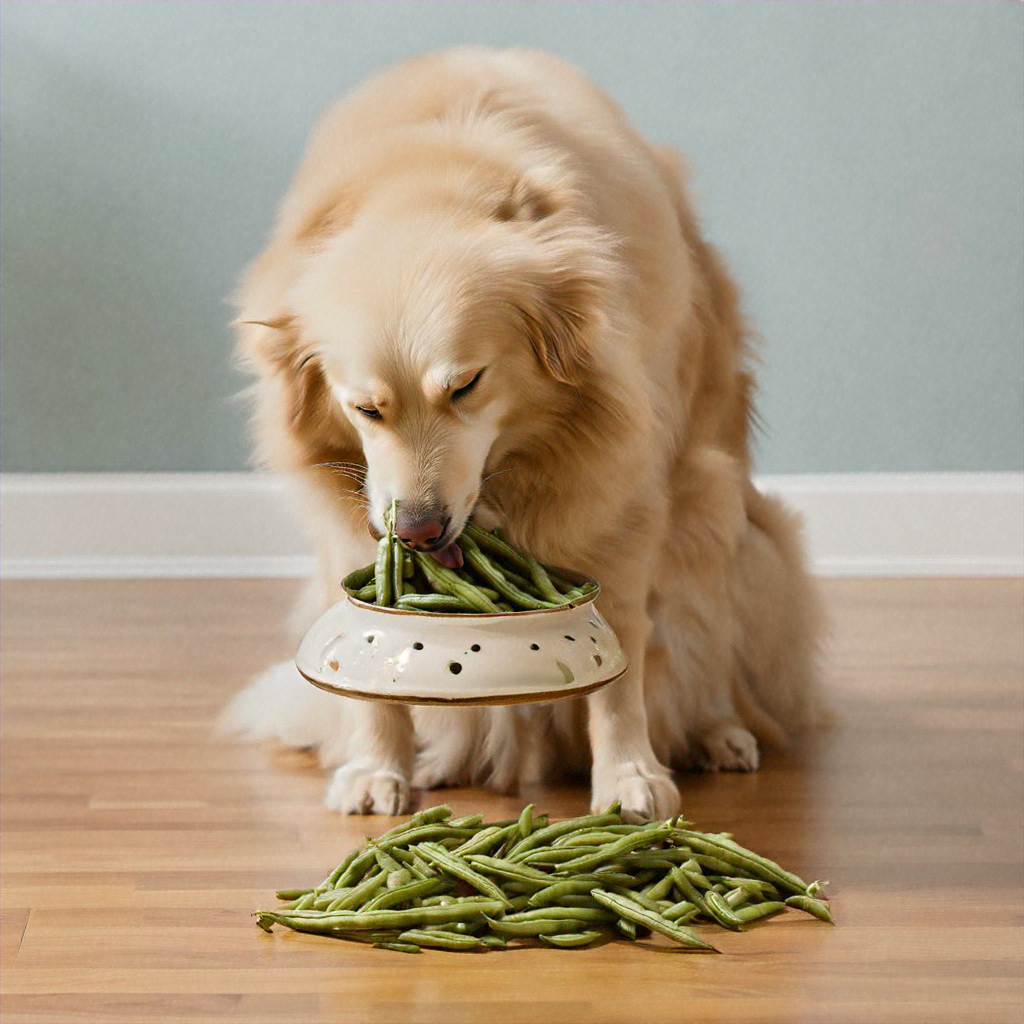
Alternatives to Green Beans for Dogs: Can dogs eat green beans
Other Safe Vegetables
If green beans aren’t suitable for your dog, there are other vegetables they can enjoy, such as carrots, Basil, okra, sweet potatoes, and peas. These also provide essential nutrients and can be a tasty treat for your furry friend.
Commercial Dog Treats
There are many commercial dog treats available that are specifically formulated to meet your dog’s nutritional needs. Look for high-quality, natural options with minimal additives.
Homemade Dog Treat Recipes
Making homemade dog treats can be a fun and rewarding way to provide healthy snacks for your pet. You can find various recipes online that use dog-safe ingredients and cater to your dog’s taste preferences.
| Alternative | Benefits | Preparation Method | Notes |
|---|---|---|---|
| Basil | Anti-inflammatory, antioxidant properties | Sprinkle fresh or dried over food, mix into treats | Use in small quantities to avoid digestive upset |
| Okra | Rich in vitamins C and K, high in fiber | Serve cooked (steamed or boiled) or raw, cut into small pieces | Avoid seasonings, ensure manageable pieces |
| Raw Meat | High in protein and essential fats | Serve fresh, high-quality raw chicken, beef, lamb, or turkey | Consult a vet before introducing, handle safely |
| Cilantro | Contains vitamins A, C, and K, aids digestion, freshens breath | Chop fresh leaves and sprinkle over food | Start with small amounts to test preference |
| Carrots | Rich in beta-carotene, fiber, vitamins | Serve raw or cooked, cut into bite-sized pieces | Avoid choking hazards with small pieces |
| Sweet Potatoes | High in fiber, vitamins, and minerals | Cook and mash, or bake small pieces for a crunchy treat | Ensure no added sugar or spices |
| Pumpkin | High in fiber, aids digestive health | Serve plain cooked or canned pumpkin (not pie filling) | Mix in small amounts with regular food |
| Peas | Good source of vitamins K, C, and B | Serve cooked or raw | Avoid canned peas with added salt |
| Zucchini | Low-calorie, high in vitamins and fiber | Serve raw or cooked, cut into small pieces | Ensure manageable pieces to prevent choking |
| Apples | High in fiber, vitamins A and C | Remove seeds and core, cut into bite-sized pieces | Avoid seeds and core due to toxicity |
Risks and Precautions: Can dogs eat green beans
Choking Hazards
Always cut green beans into small, bite-sized pieces, especially for smaller dogs or those who tend to gulp their food. This helps prevent choking and makes them easier to digest.
Overfeeding Concerns
While green beans are low in calories, overfeeding can still lead to digestive issues like gas or diarrhea.
Seasonings and Additives
Avoid giving your dog green beans that have been cooked with seasonings, oils, or other additives. These can be harmful to dogs and may cause gastrointestinal upset.
Signs of Green Bean Allergies in Dogs:
Common Symptoms
Allergic reactions to green beans in dogs can include itching, swelling, hives, and digestive issues like vomiting or diarrhea. If you notice any of these symptoms, discontinue feeding green beans and consult your vet.
What to Do if Your Dog is Allergic
If your dog shows signs of an allergic reaction, stop feeding them green beans immediately. Provide plenty of water and monitor their condition.
Conclusion: Can dogs eat green beans
Introducing green beans and other healthy alternatives to your dog’s diet can provide a variety of nutritional benefits, including essential vitamins, minerals, and fiber. Green beans, along with basil, okra, raw meat, cilantro, carrots, sweet potatoes, pumpkin, peas, zucchini, and apples, can all be excellent additions when prepared correctly and served in moderation. Each option has its unique advantages, from promoting digestive health to boosting the immune system.
When incorporating new foods into your dog’s diet, always start with small amounts and monitor for any adverse reactions. Consult your veterinarian to ensure these additions are suitable for your dog’s specific health needs and dietary requirements. By offering a diverse range of healthy treats, you can enhance your dog’s overall well-being and keep their diet both nutritious and exciting.
FAQs: Can dogs eat green beans
- How much green beans can I give my dog?
- Green beans should make up no more than 10% of your dog’s daily caloric intake. Start with small amounts and monitor for any adverse reactions.
- Why can’t dogs have green beans?
- Dogs can have green beans, but they should be served plain and in moderation to avoid digestive issues.
- What veggies can dogs eat?
- Dogs can eat carrots, sweet potatoes, peas, zucchini, pumpkin, and broccoli, among others.
- Are green beans a laxative for dogs?
- Green beans are high in fiber and can aid in digestion, but too many can cause digestive upset.
- Are raw green beans safe to eat?
- Yes, raw green beans are safe for dogs, but they should be cut into small pieces to prevent choking.
- Can I feed my dog rice and green beans every day?
- While rice and green beans are safe, they should not replace a balanced diet and should be given in moderation.
- Are any beans toxic to dogs?
- Some beans, like raw kidney beans, contain toxins and should be avoided. Always ensure beans are cooked and plain.
- When should you not eat green beans?
- Avoid eating or feeding green beans if they are spoiled, moldy, or have an off smell.
- Are carrots and green beans OK for dogs?
- Yes, both carrots and green beans are safe and healthy for dogs when given in moderation.
Can Dogs Eat Baked Beans?

Jahanzaib Kaleem is a passionate and knowledgeable pet writer and veterinarian dedicated to enhancing the well-being of pets and educating pet owners around the world. With years of experience in veterinary medicine and a deep love for animals, Jahanzaib combines his medical expertise with a flair for writing to deliver insightful and practical advice on pet care.


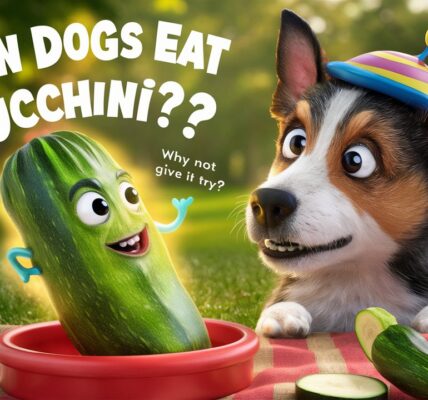


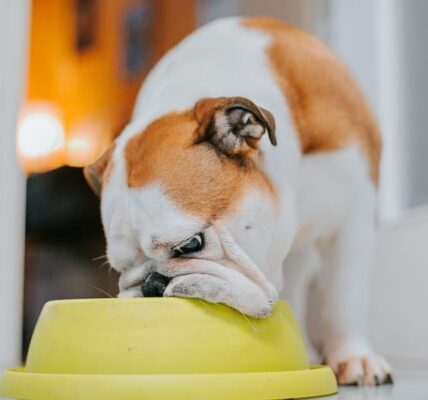















7 COMMENTS